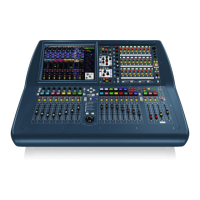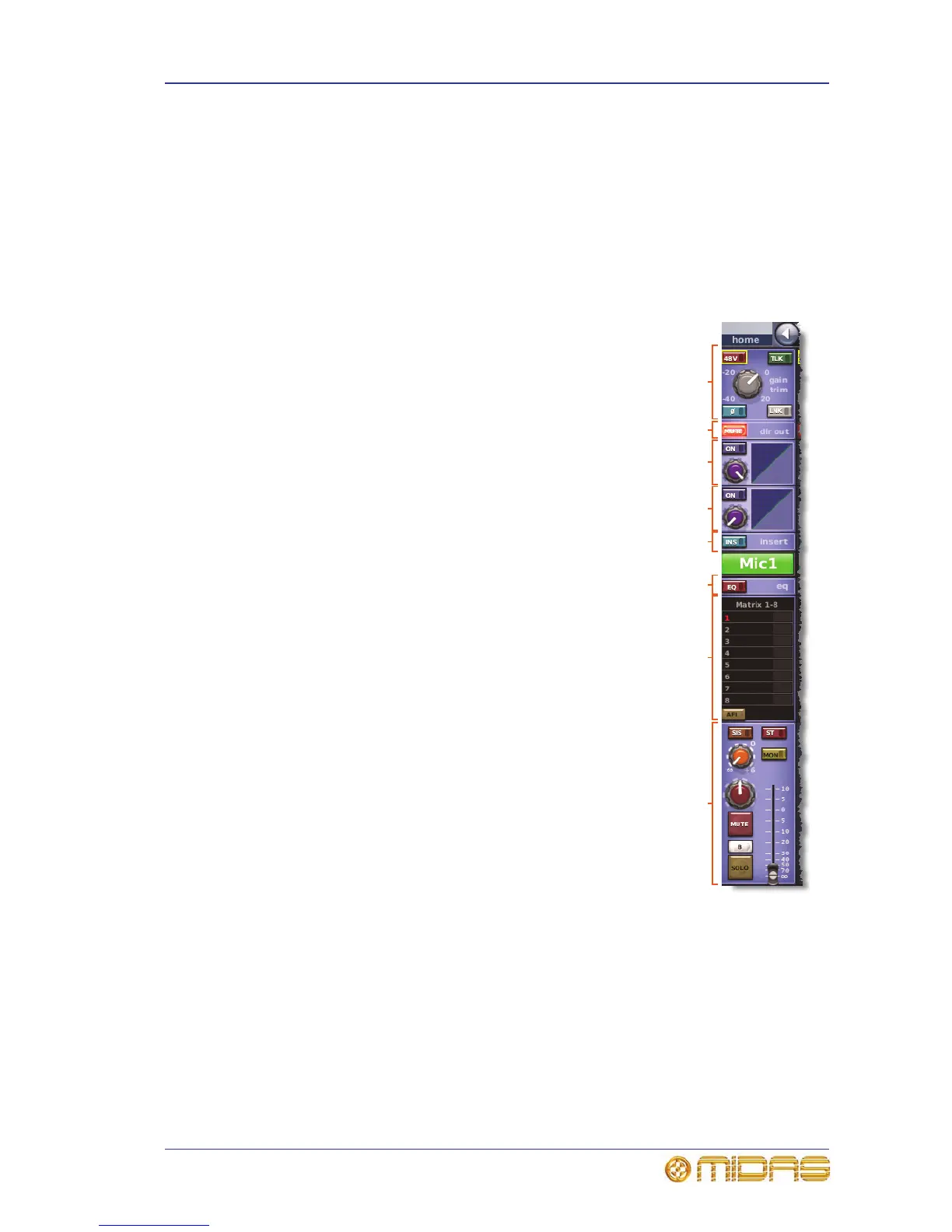Inputs on the GUI 239
PRO2 Live Audio System
Owner’s Manual
Inputs on the GUI
The GUI replicates the channel faders by displaying the eight channels currently
assigned to them. When an input channel is selected the GUI’s channel strip displays
the channel’s input channel overview. From this display, you can access detail areas
by clicking within specific sections (avoiding any controls).
For details of how to operate the GUI, see Chapter 6 “Working With The PRO2 Control
Centre”.
GUI input fast strips
The input fast strips on the GUI (a typical example
is shown right) give an overview of their equivalent
versions on the control surface.
The gain trim section changes its appearance to
suit the type of control that has been ‘swapped’ to it
(see “Using gain swap” on page 247).
Some detail areas are configuration dependent,
such as the bus sends (depends on surround
configuration) and console gain/digital trim.
The appearance of the console gain/digital trim
section (also for channel detail area, see “GUI
channel strips” on page 239) depends on whether
or not a signal source is patched to the input
channel and the nature of that source, and the
current status of the Gain Swap parameter.
Due to the free-routing nature of the console's
architecture, it is possible that any given input to a
signal chain can be sourced from a variety of
devices that have various remote-controlled mic
amps. However, the GUI will offer the correct
controls according to the source that has been
routed.
GUI channel strips
When an input channel is selected, its overview
appears in the channel strip. This is called the
“input channel overview” (see Figure 22, “Detail
areas available from the input channel overview
display,” on page 240) and provides limited
controls and status information. Clicking a
non-control area within a specific section will open
that section’s detail area, which contains the full set
of controls. The following detail areas are available,
which are shown in Figure 22 “Detail areas
available from the input channel overview display” on page 240:
• Configuration (direct out, safes and gain trim - channel ID, channel source, filters,
linking, swap, delay and processing order)
• Compressor
•Gate
•EQ
•Inserts
•Mix buses

